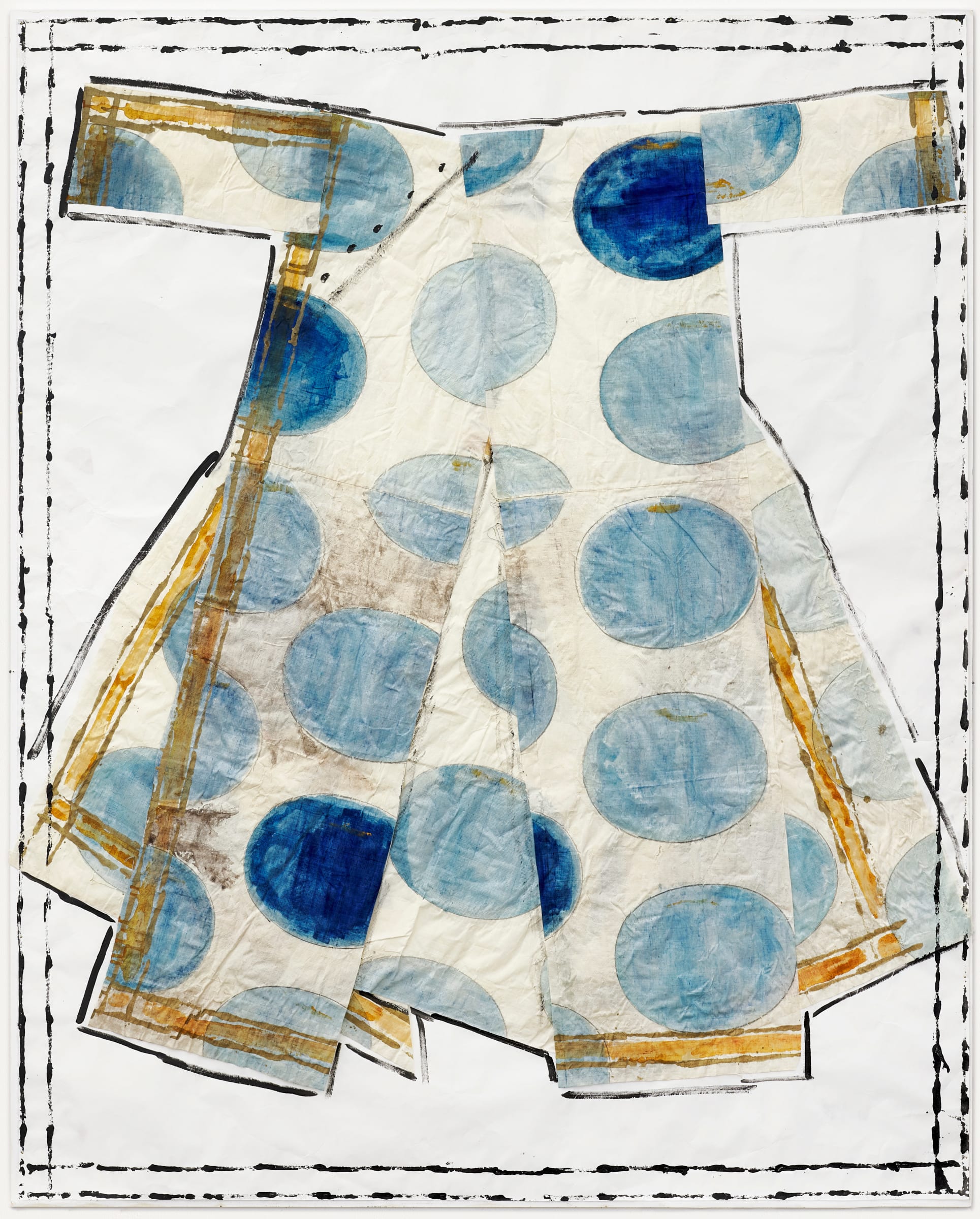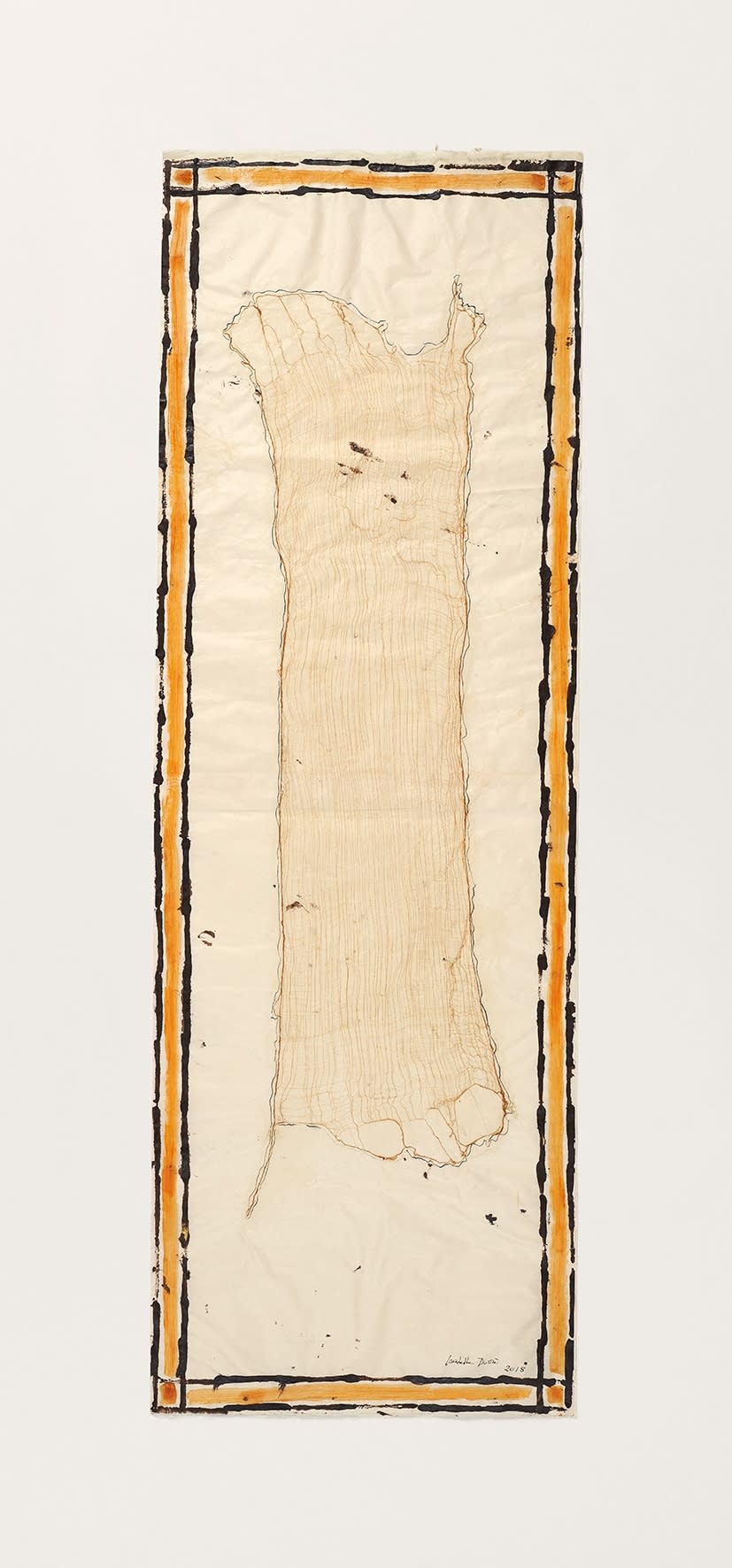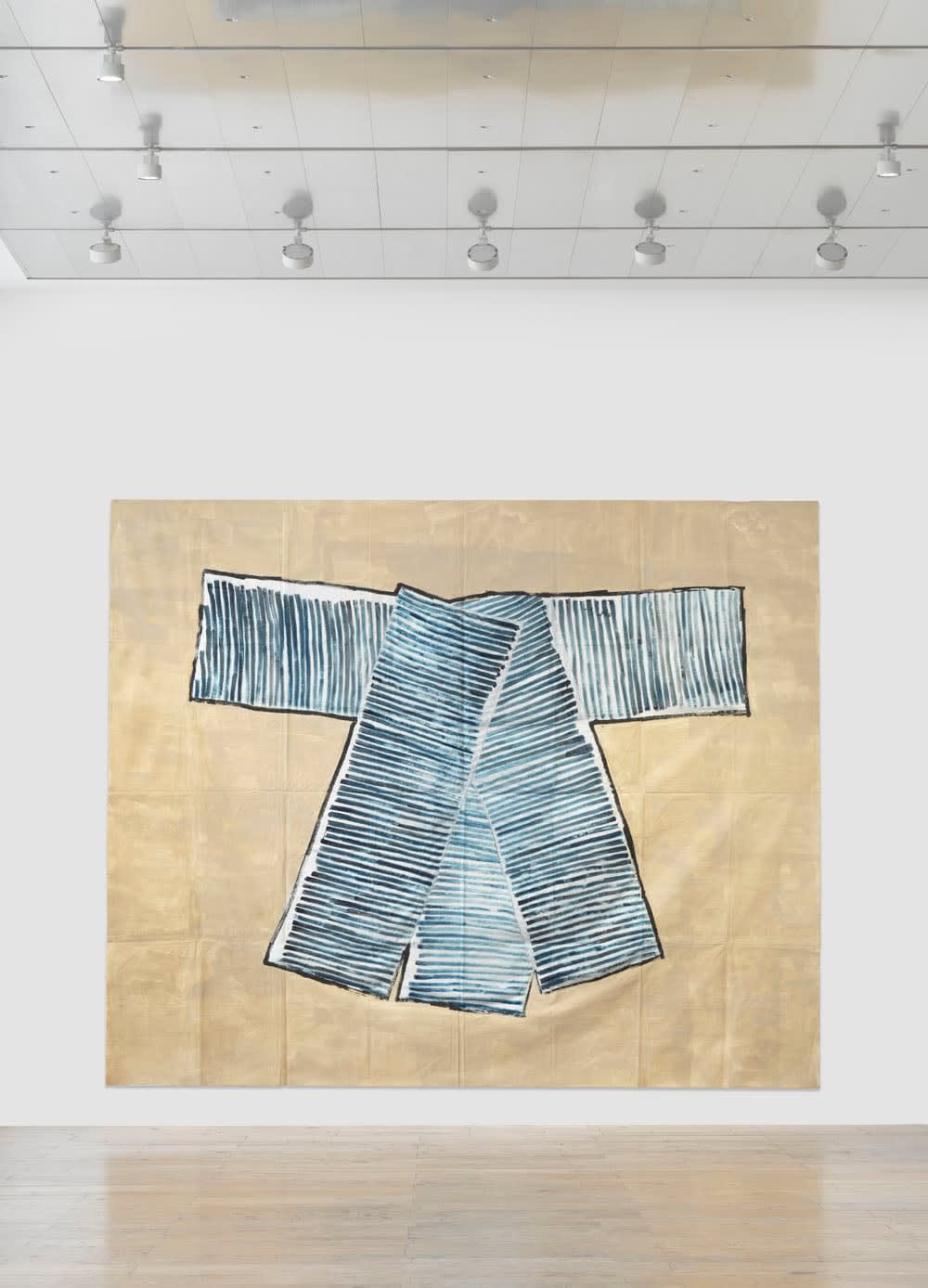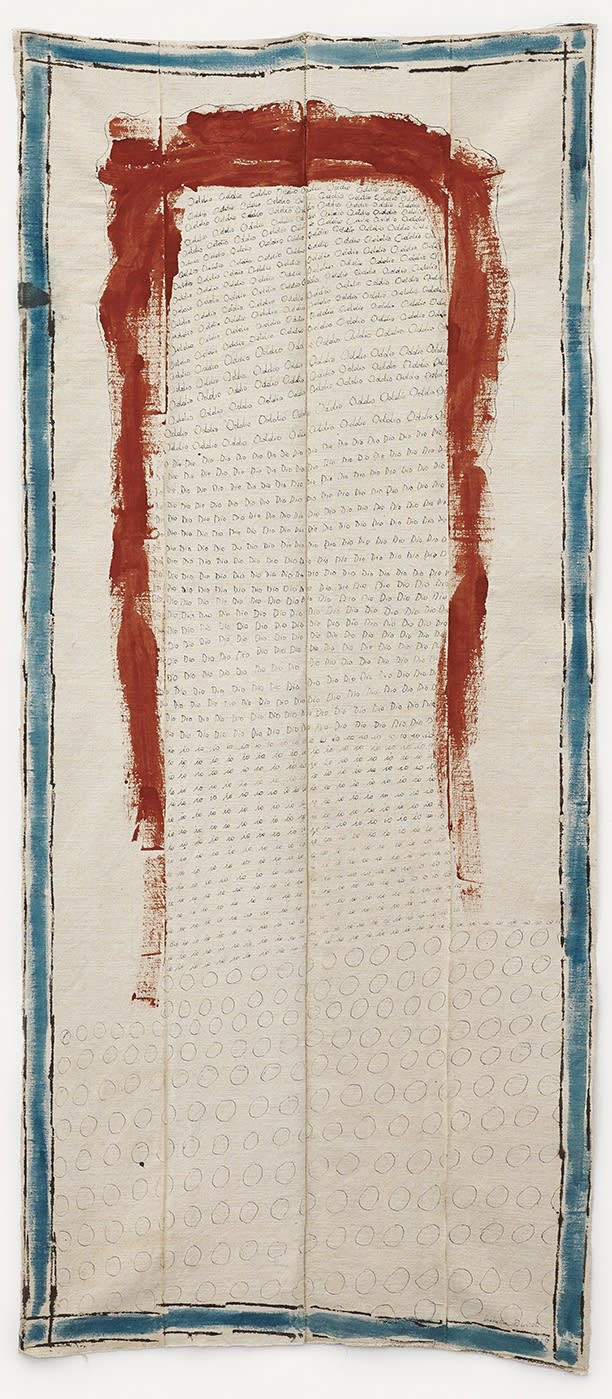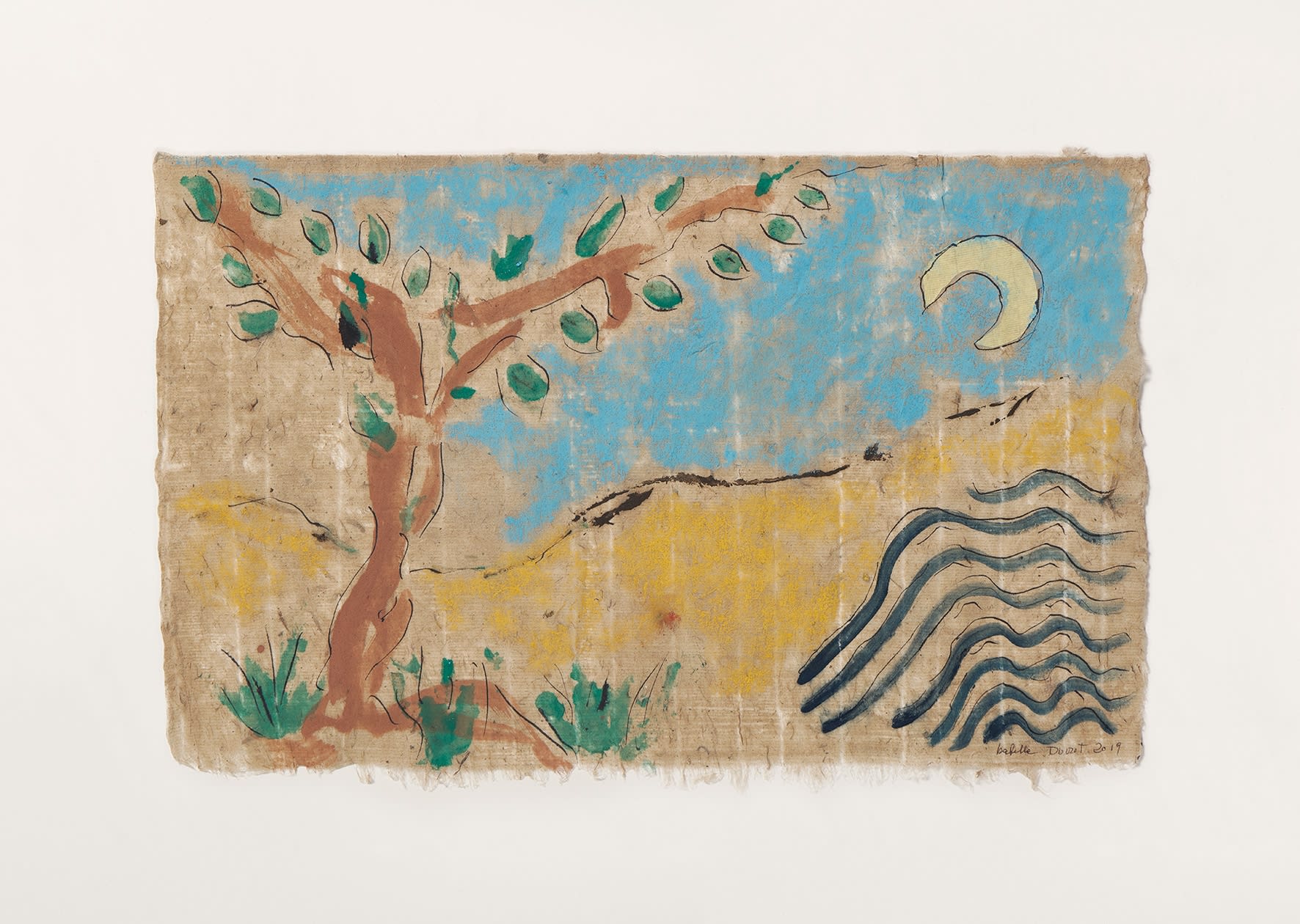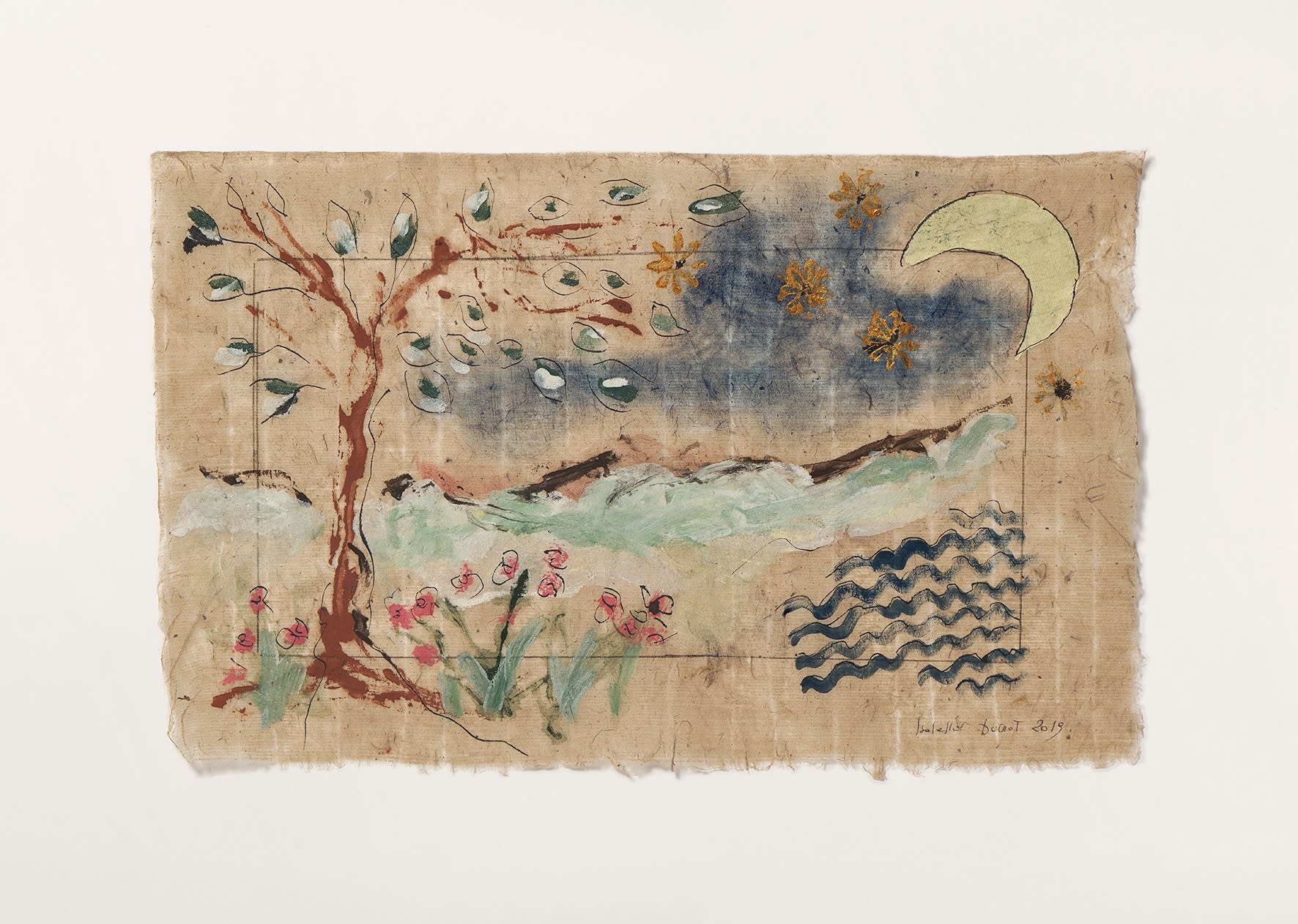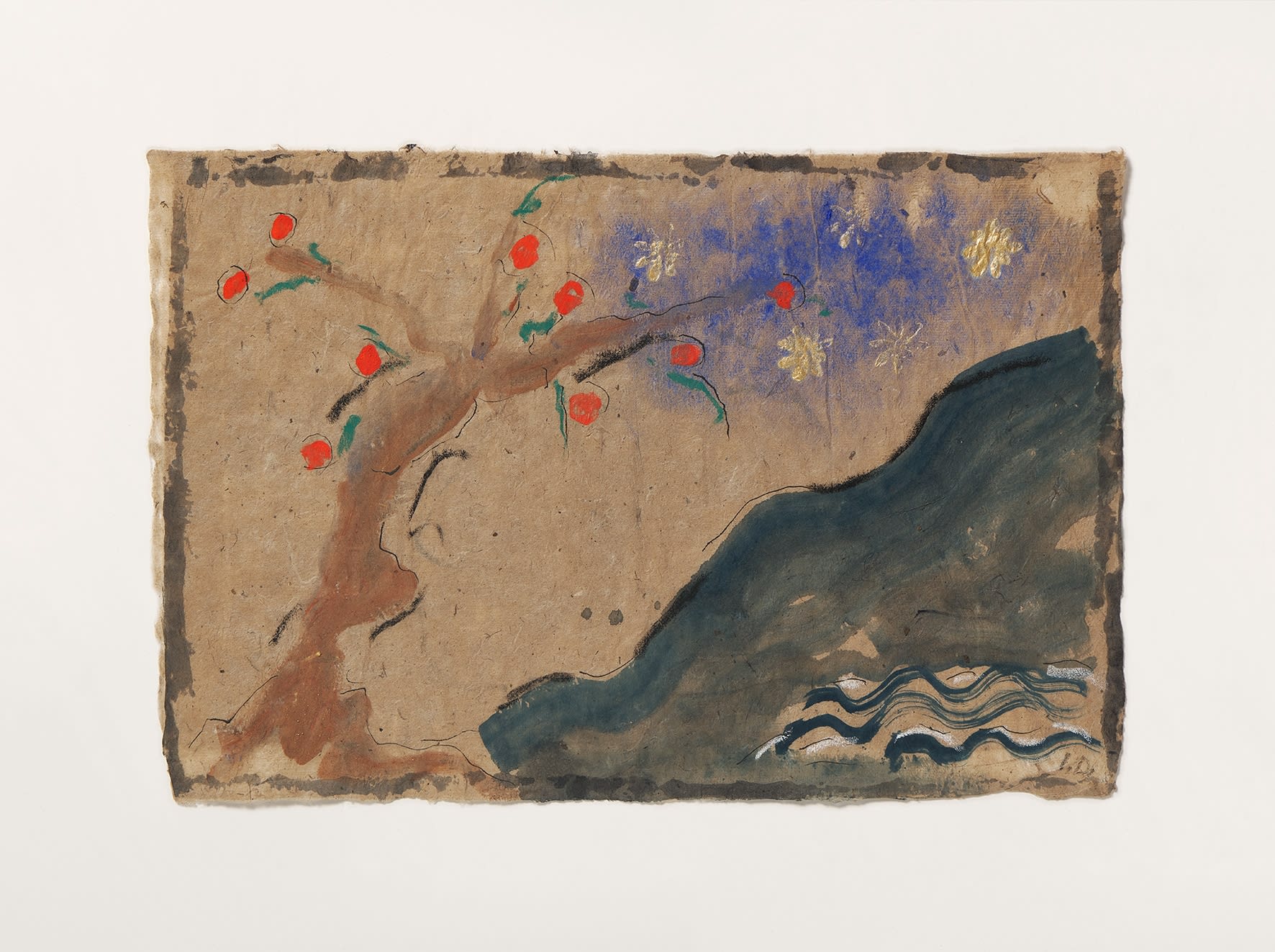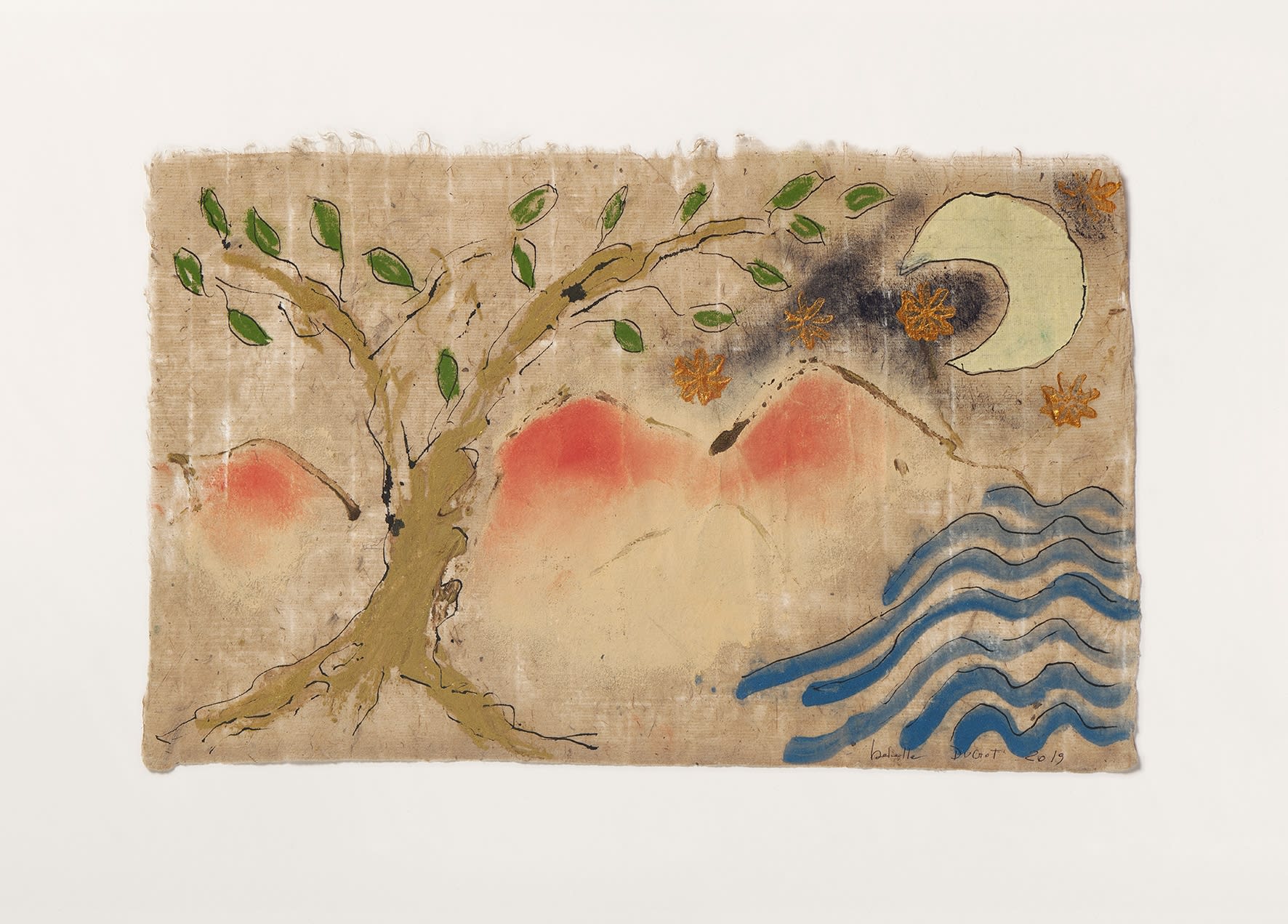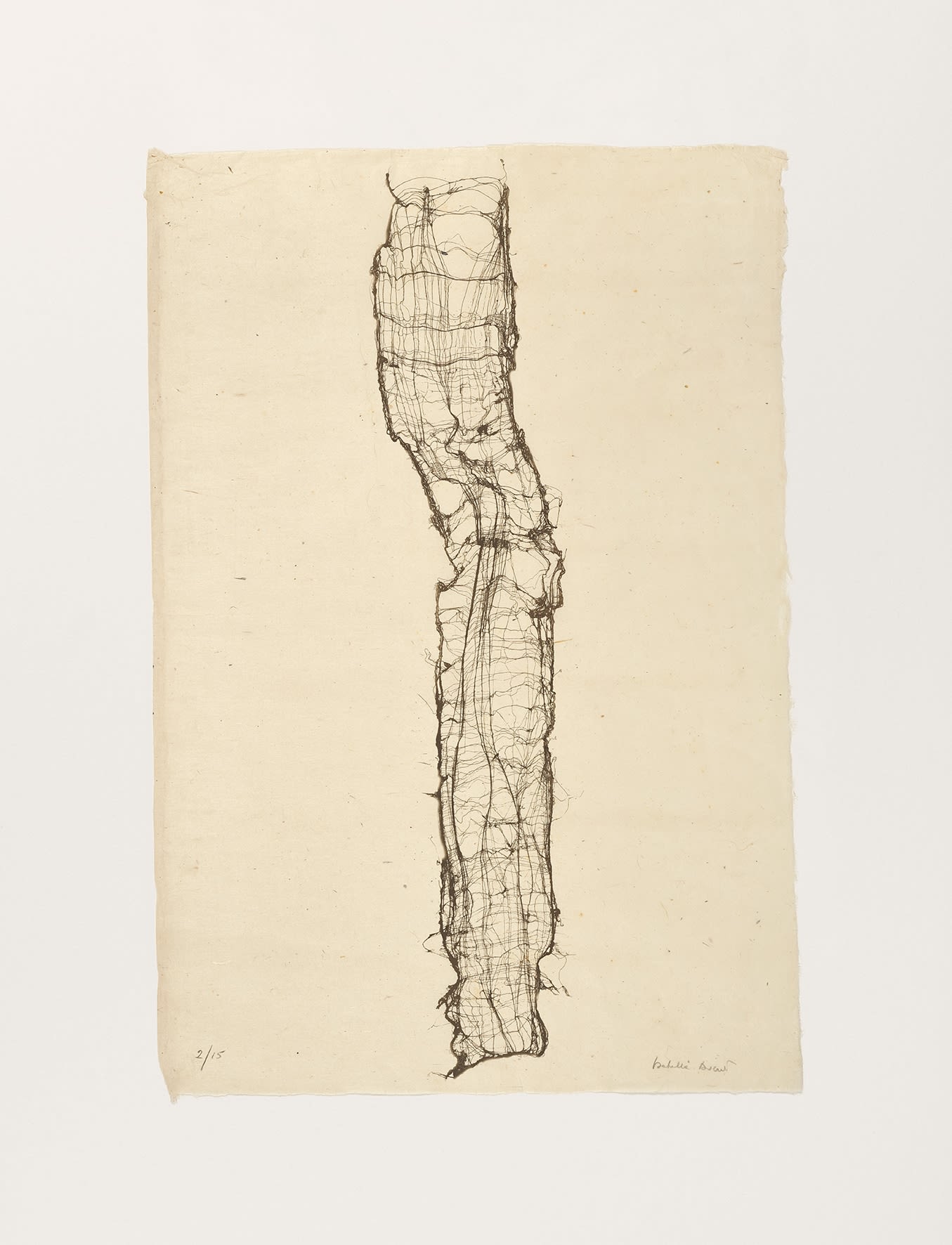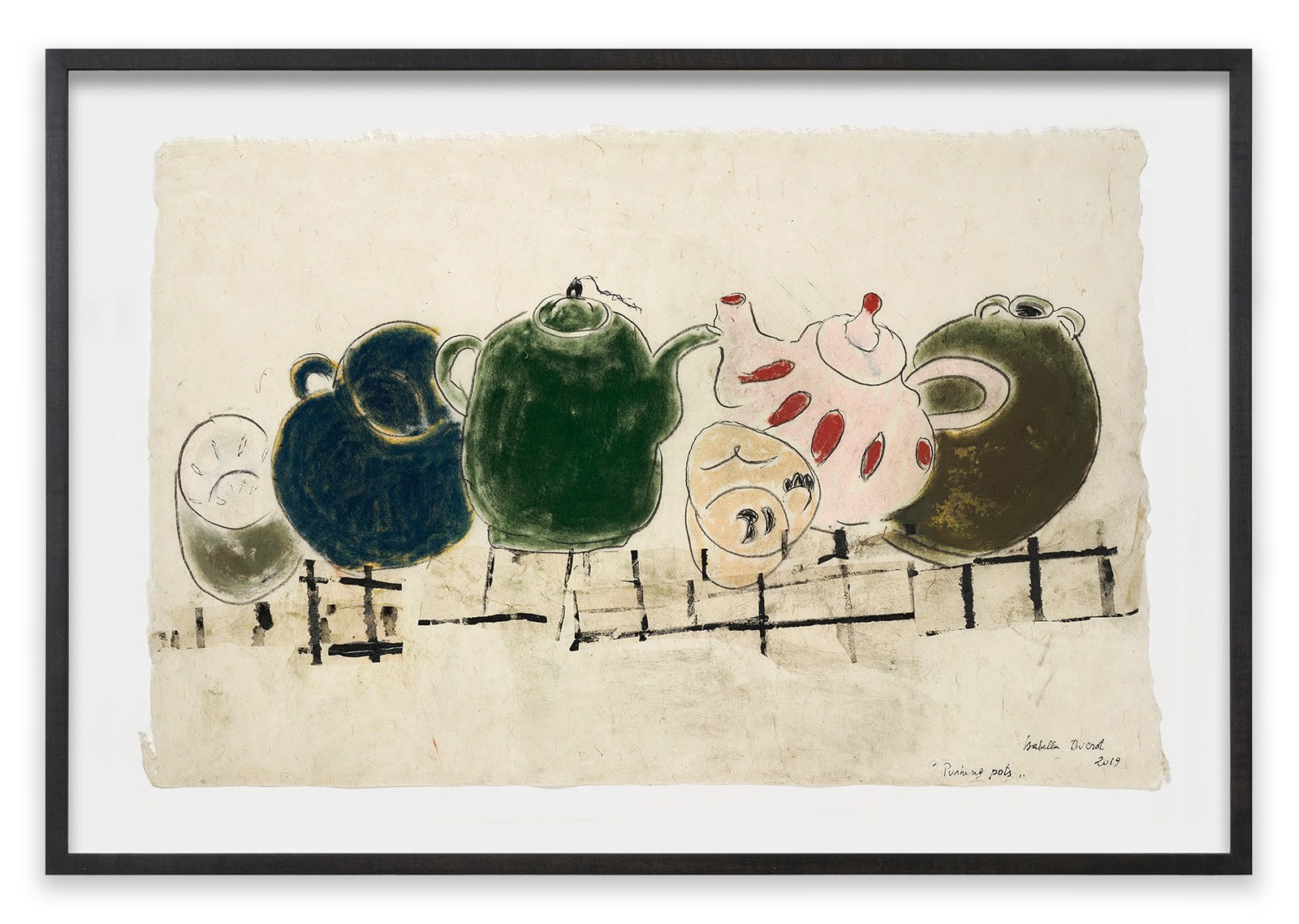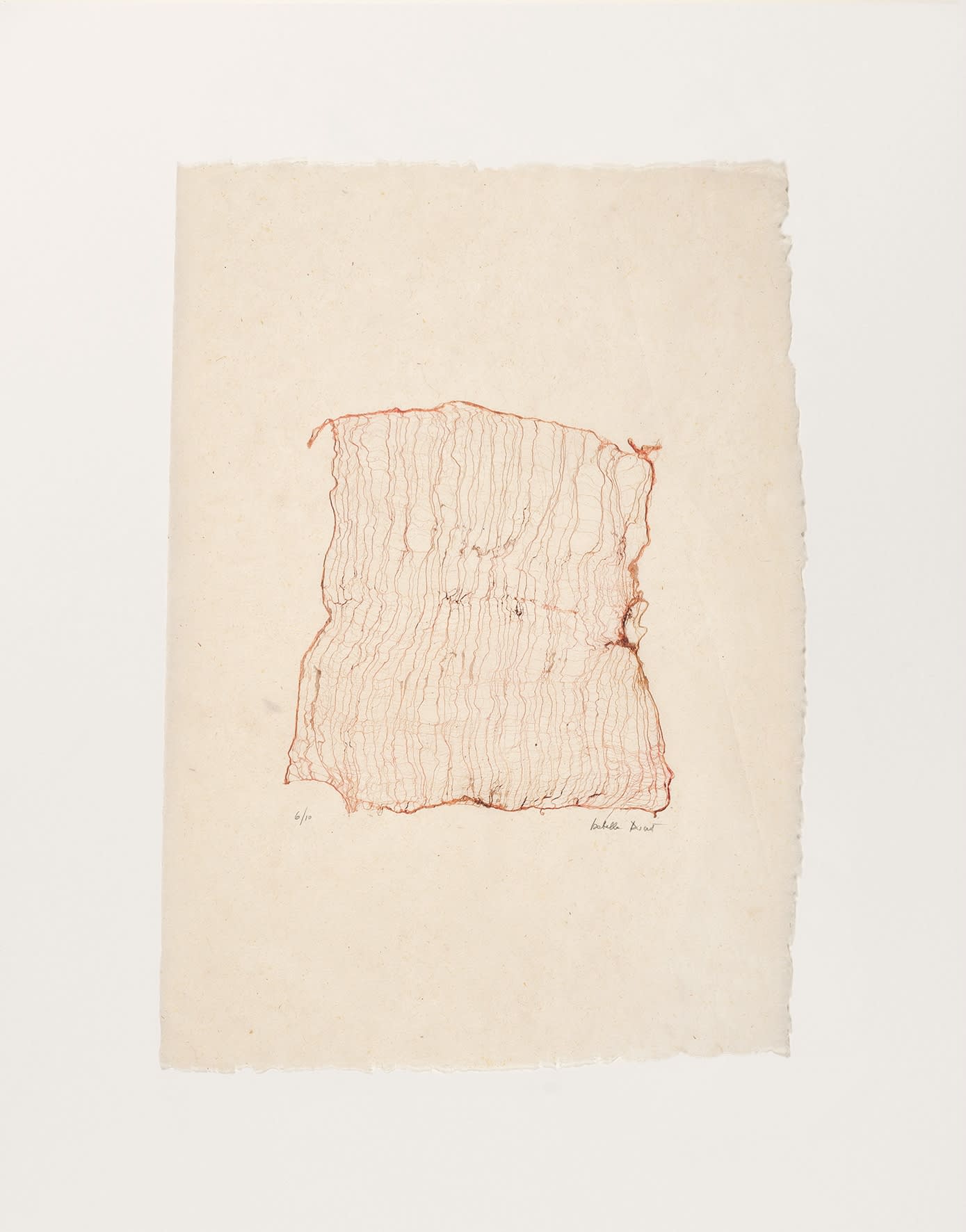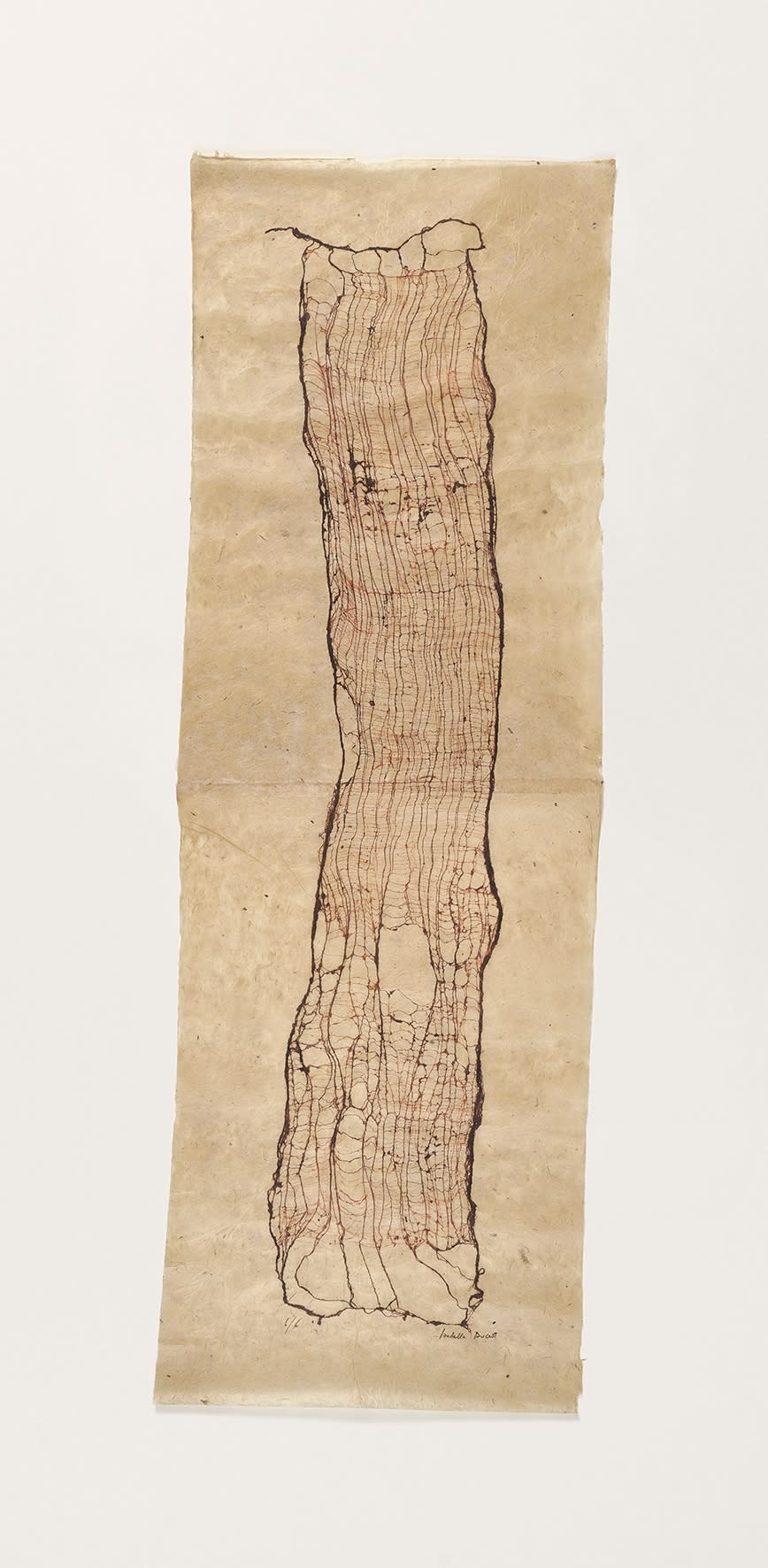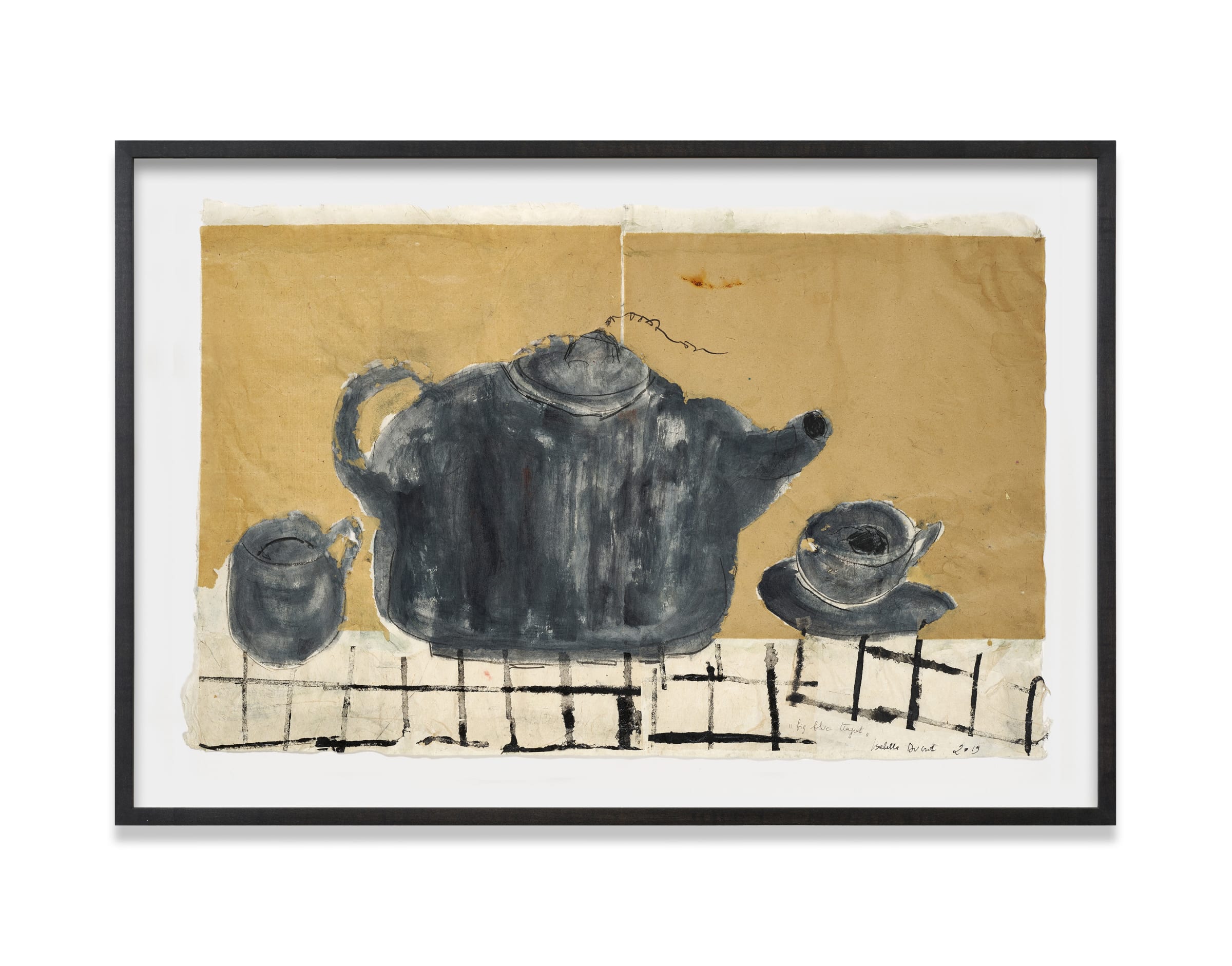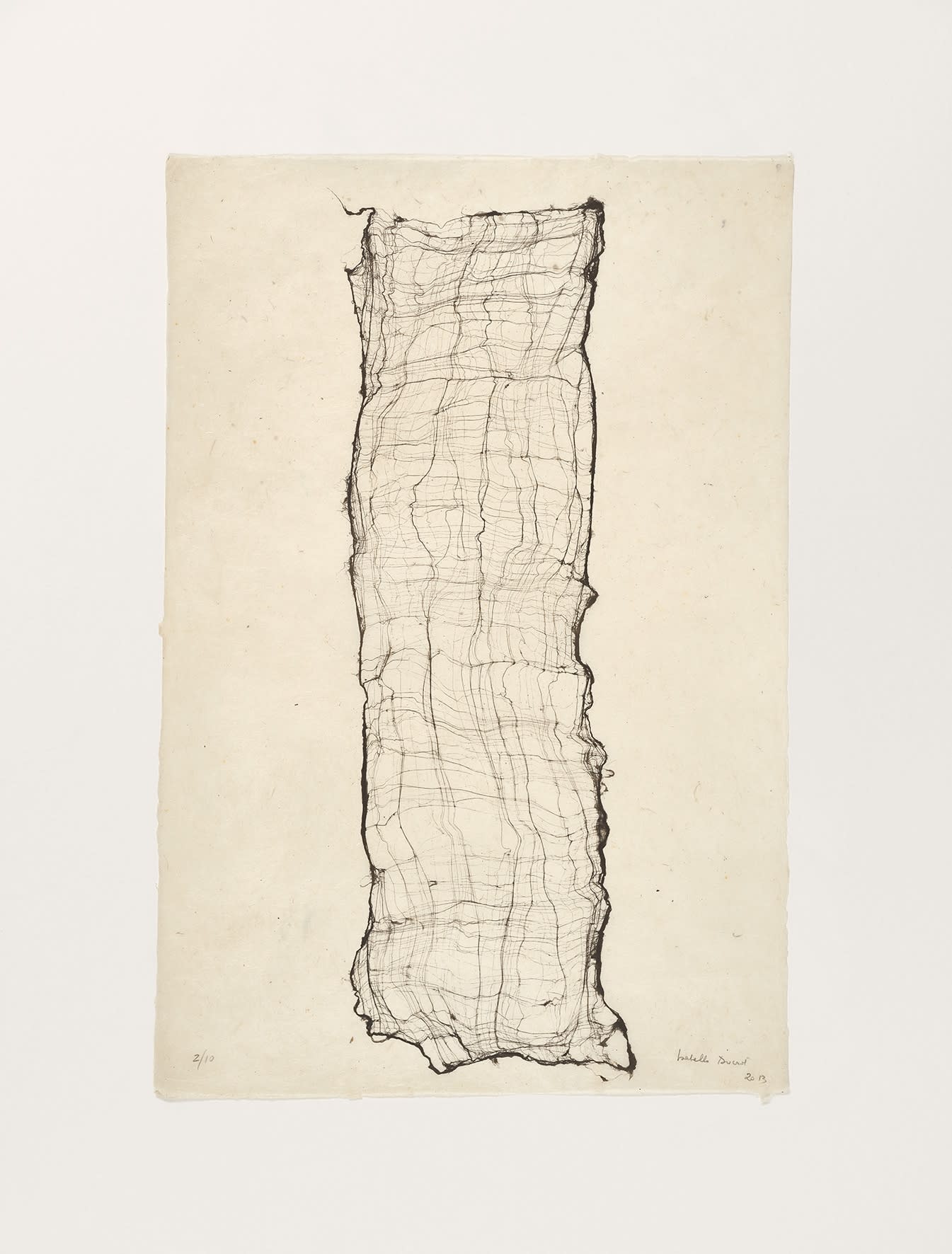Isabella Ducrot: Big Aura
Through her extensive travels in Asia, Isabella Ducrot has assembled a sublime collection of antique textiles, originating primarily from India, China, Tibet and Afghanistan. Fascinated by the presence of rhythm and rhyme in these materials – two notions crucial to the craft of the weaver – Ducrot has made it her artistic mission to transform them into objects which represent the rhythm of life.
For her first solo show at Capitain Petzel Isabella Ducrot presents different series, all of which share an element of repetition. It is in repetition precisely that Ducrot finds these rhythmical, musical motifs; in repetition that these textiles of the East become to her pleasant lullabies (una gradevole nenia) or effective prayers (una preghiera efficace). Ducrot believes this kind of repetition has suffered in maintaining its aesthetic justification in the West, having been subordinated merely to decoration, particularly prior to any turns towards abstraction. She has as a result become interested in reducing the prejudice against decoration in the applied arts, by giving both voice and scale to patterns of all kinds, as beautifully exemplified in Big Aura II which presides over the exhibition space.
Throughout the space, Ducrot presents her Bende Sacre (Sacred Bandages). These scarves originate from Tibetan monasteries where they were used as votive offerings to be placed around the shoulders of sacred sculptures and other objects of worship. Ducrot imagines the prayers emerging from the rhythm of the weaver’s loom; the very fabric of the scarf growing with them in unison. She unveils with these works a tenacious alliance between mind and matter as the threads intertwine in allusion to divine messages.
The artist’s chosen subjects are otherwise landscapes, vases and teapots. Nora Iosia elaborates on the still lives on paper : ‘These vases, teapots, and a handful of natural elements, in the rhythm of exercise, of repetition, take on a character that grows further and further away from the meaning of presence: the initial intention to stay within the confines of their formal essence founders nonetheless in a meditation that draws reality back to the essential in a single gesture, almost an ideogram of the present. The objects chosen by Isabella Ducrot (…) belong to a scenic design of interiors; raised to the rank of protagonists, they pass from being present to a new presence, and reveal their beauty, because they have been stolen from memory.’ In the series La bella terra, for instance, rivers, sky, stars, moon and trees are used again and again in order to compose laudative songs for the earth’s fundamental virtues and the urge to protect them.
Isabella Ducrot (born Naples, 1931, lives and works Rome) has exhibited this year at Galerie Gisela Capitain in Cologne, and in 2018 at the Spazio Parlato in Palermo. In 2014 she had a major exhibition at the Galleria Nazionale d’Arte Moderna e Contemporanea in Rome, Italy. In 1993 she showed her work at the Venice Biennale. Ducrot is due to have a solo exhibition at Galerie Mezzanin, Geneva, Switzerland in the winter of 2020.
Isabella Ducrot hat während ihrer ausgedehnten Reisen in Asien eine großartige Sammlung antiker Textilien zusammengestellt, die vor allem aus Indien, China, Tibet und Afghanistan stammen. Fasziniert von dem Reim und Rhythmus, der in diesen Materialien steckt – zwei Begriffe, die für das Webhandwerk entscheidend sind – hat Ducrot es sich zur künstlerischen Aufgabe gemacht, die Textilien in Objekte zu verwandeln, die den Rhythmus des Lebens darstellen.
In ihrer ersten Einzelpräsentation bei Capitain Petzel zeigt Isabella Ducrot verschiedene Serien, die alle das Thema der Wiederholung teilen. Denn gerade in der Wiederholung findet Ducrot rhythmische, musikalische Motive; in der Wiederholung werden diese Stoffe aus dem Osten für sie zu wohligen Schlafliedern (una gradevole nenia), oder wirksamen Gebeten (una preghiera efficace). Ducrot glaubt, dass diese Art der Wiederholung im Westen ihre ästhetische Legitimierung einbüßen musste, da sie lediglich der Dekoration zugehörig war, insbesondere vor jeglicher Hinwendung zur Abstraktion. Hier liegt ihr Interesse begründet, Vorurteile gegen das Dekorative in den Künsten abzubauen, indem sie Mustern aller Art Stimme und Dimension verleiht, wie in der großformatigen Arbeit Big Aura II wunderschön anschaulich wird.
Im großen Ausstellungsraum präsentiert Ducrot ihre Bende Sacre (Heilige Binden). Diese Schals stammen ursprünglich aus tibetischen Klöstern, wo sie als Weihgaben um die Schultern sakraler Skulpturen und anderer Kultgegenstände gelegt wurden. Ducrot stellt sich die Gebete vor, die aus dem Rhythmus des Webstuhls hervorgehen, und wie der Stoff des Schals im Gleichklang mit ihnen wächst. Während sich die Fäden in Anspielung auf göttliche Botschaften miteinander verflechten, offenbart Ducrot mit diesen Arbeiten ein beharrliches Bündnis zwischen Geist und Material.
Andere wiederkehrende Motive der Künstlerin sind Landschaften, Vasen und Teekannen. Über die Stillleben auf Papier sagt Nora Iosia: „Diese Vasen, Teekannen sowie einige Elemente aus der Natur nehmen durch den Rhythmus der Ausführung und Wiederholung einen Charakter an, der sich zunehmend von der Bedeutung ihrer Präsenz entfernt: Die anfängliche Absicht, ihren formalen Charakter zu erhalten, weicht unwillkürlich einer Meditation, die mit einer einzigen Geste das Reale auf das Wesentliche – gewissermaßen auf ein Ideogramm des Vorhandenen – reduziert. Die Objekte, die Isabella Ducrot auswählt (…), sind Elemente eines Bühnenbilds aus Einrichtungsstücken; sie wurden als Protagonisten ausgesucht, die aus der Gegenwart in eine erneuerte Gegenwart übergehen; sie offenbaren ihre Schönheit, weil sie aus dem Gedächtnis gestohlen wurden.“ In der Serie La bella terra werden beispielsweise aus Himmel, Mond, Sternen, Bäumen und Flüssen immer neue Lieder komponiert. Sie loben die elementaren Schönheiten der Erde und berichten von dem Drang, diese zu schützen.
Isabella Ducrot (geb. 1931 in Neapel, lebt und arbeitet in Rom) hat dieses Jahr in der Galerie Gisela Capitain in Köln ausgestellt und 2018 im Spazio Parlato in Palermo. Im Jahr 2014 hatte sie eine große Einzelausstellung in der Galleria Nazionale d’Arte Moderna e Contemporanea in Rom. 1993 zeigte sie Arbeiten bei der Biennale in Venedig. Ihre nächste Einzelausstellung wird im Winter 2020 von der Galerie Mezzanin in Genf ausgerichtet.
-
 Isabella DucrotAbito, 2016Mixed media on silk183 x 147 cm
Isabella DucrotAbito, 2016Mixed media on silk183 x 147 cm
72.1 x 57.9 inches -

-
 Isabella DucrotBende Sacre, 2018Tibetan textile on paper194 x 65 cm
Isabella DucrotBende Sacre, 2018Tibetan textile on paper194 x 65 cm
76.4 x 25.6 inches -

-
 Isabella DucrotBende Sacre, 2018Tibetan textile on paper194 x 65 cm
Isabella DucrotBende Sacre, 2018Tibetan textile on paper194 x 65 cm
76.4 x 25.6 inches -
 Isabella DucrotBende Sacre, 2018Tibetan textile on paper193.5 x 65.5 cm
Isabella DucrotBende Sacre, 2018Tibetan textile on paper193.5 x 65.5 cm
76.2 x 25.8 inches -
 Isabella DucrotBende Sacre, 2018Tibetan textile on paper193.5 x 65 cm
Isabella DucrotBende Sacre, 2018Tibetan textile on paper193.5 x 65 cm
76.2 x 25.6 inches -
 Isabella DucrotBende Sacre, 2018Tibetan textile on paper193.5 x 64.5 cm
Isabella DucrotBende Sacre, 2018Tibetan textile on paper193.5 x 64.5 cm
76.2 x 25.4 inches -

-
 Isabella DucrotBende Sacre, 2018Tibetan textile on paper194.5 x 64.5 cm
Isabella DucrotBende Sacre, 2018Tibetan textile on paper194.5 x 64.5 cm
76.6 x 25.4 inches -
 Isabella DucrotBende Sacre, 2018Tibetan textile on paper194.5 x 64.5 cm
Isabella DucrotBende Sacre, 2018Tibetan textile on paper194.5 x 64.5 cm
76.6 x 25.4 inches -

-
 Isabella DucrotBende Sacre, 2018Tibetan textile on paper194 x 64.5 cm
Isabella DucrotBende Sacre, 2018Tibetan textile on paper194 x 64.5 cm
76.4 x 25.4 inches -
 Isabella DucrotBig Aura II, 2017Textile and pigments on paper and textile394 x 473 cm
Isabella DucrotBig Aura II, 2017Textile and pigments on paper and textile394 x 473 cm
155.1 x 186.2 inches -
 Isabella DucrotOddio, 2019Pigment and china ink on canvas206 x 89 cm
Isabella DucrotOddio, 2019Pigment and china ink on canvas206 x 89 cm
81.1 x 35 inches -
 Isabella DucrotBella Terra XL, 2019Watercolor, pigment, china ink and pencil on Chinese paperFramed Dimensions:
Isabella DucrotBella Terra XL, 2019Watercolor, pigment, china ink and pencil on Chinese paperFramed Dimensions:
39 x 54 x 3 cm
15.3 x 21.2 x 1.1 inches
Paper Dimensions:
29 x 44.5 cm
11.4 x 17.5 inches -
 Isabella DucrotBella Terra XXIX, 2019Watercolor, pigment, china ink and pencil on Chinese paperFramed Dimensions:
Isabella DucrotBella Terra XXIX, 2019Watercolor, pigment, china ink and pencil on Chinese paperFramed Dimensions:
39 x 54 x 3 cm
15.3 x 21.2 x 1.1 inches
Paper Dimensions:
31 x 44.5 cm
12.2 x 17.5 inches -
 Isabella DucrotBella Terra XXXII, 2019Watercolor, pigment, china ink and pencil on Chinese paperFramed Dimensions:
Isabella DucrotBella Terra XXXII, 2019Watercolor, pigment, china ink and pencil on Chinese paperFramed Dimensions:
39 x 54 x 3 cm
15.3 x 21.2 x 1.1 inches
Paper Dimensions:
28 x 45 cm
11 x 17.7 inches -
 Isabella DucrotBella Terra XXXVIII, 2019Watercolor, pigment, china ink and pencil on Chinese paperFramed Dimensions:
Isabella DucrotBella Terra XXXVIII, 2019Watercolor, pigment, china ink and pencil on Chinese paperFramed Dimensions:
39 x 54 x 3 cm
15.3 x 21.2 x 1.1 inches
Paper Dimensions:
30 x 45 cm
11.8 x 17.7 inches -
 Isabella DucrotBella Terra XXVII, 2019Watercolor, pigment, china ink and pencil on Chinese paperFramed Dimensions:
Isabella DucrotBella Terra XXVII, 2019Watercolor, pigment, china ink and pencil on Chinese paperFramed Dimensions:
39 x 54 x 3 cm
15.3 x 21.2 x 1.1 inches
Paper Dimensions:
29 x 45 cm
11.4 x 17.7 inches -
 Isabella DucrotBella Terra XXXV, 2019Watercolor, pigment, china ink and pencil on Chinese paperFramed Dimensions:
Isabella DucrotBella Terra XXXV, 2019Watercolor, pigment, china ink and pencil on Chinese paperFramed Dimensions:
39 x 54 x 3 cm
15.3 x 21.2 x 1.1 inches
Paper Dimensions:
29 x 44.5 cm
11.4 x 17.5 inches -

-
 Isabella DucrotPushing Pots, 2019Watercolor, pigment and oil pastel on Nepal paperSigned, dated and titled rectoPaper dimensions:
Isabella DucrotPushing Pots, 2019Watercolor, pigment and oil pastel on Nepal paperSigned, dated and titled rectoPaper dimensions:
56.5 x 88 cm / 22.2 x 34.7 inches
Framed dimensions:
68 x 99.8 cm / 26.8 x 39.3 inches -
 Isabella DucrotKatha I, 2013Digital print on paperFramed dimensions:
Isabella DucrotKatha I, 2013Digital print on paperFramed dimensions:
81.3 x 58.7 x 3 cm
32 x 23.1 x 1.2 inches
Paper dimensions:
73 x 50.5 cm
28.7 x 19.9 inchesEdition 6/10 -
 Isabella DucrotKatha X, 2013Digital print on paperFramed dimensions:
Isabella DucrotKatha X, 2013Digital print on paperFramed dimensions:
158.5 x 59.5 x 3 cm
62.4 x 23.43 x 1.18 inches
Print Dimensions:
149.5 x 50.5 cm
58.9 x 19.9 inchesEdition 6/6 -
 Isabella DucrotBig Blue Teapot, 2019Pigments and watercolor on French paperPaper dimensions:
Isabella DucrotBig Blue Teapot, 2019Pigments and watercolor on French paperPaper dimensions:
56 x 88 cm / 22.1 x 34.7 inches
Framed dimensions:
68 x 99.8 cm / 26.8 x 39.3 inches -
 Isabella DucrotKatha II, 2013Digital print on paperFramed dimensions:
Isabella DucrotKatha II, 2013Digital print on paperFramed dimensions:
85.3 x 59.6 x 3 cm
33.6 x 23.5 x 1.2 inches
Paper dimensions:
76 x 51 cm
29.9 x 20.1 inchesEdition 2/10

